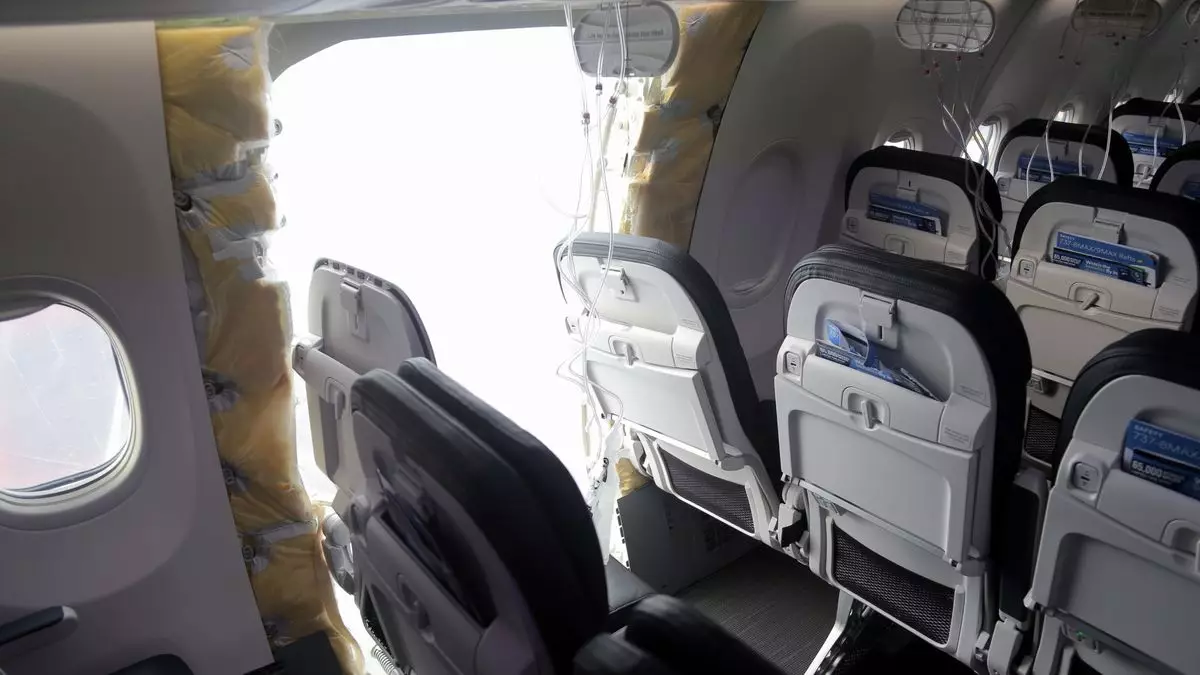Boeing factory workers have disclosed accounts of being pressured to work too fast and asked to perform jobs for which they weren’t adequately qualified. Federal investigators have opened a two-day hearing into the blowout incident involving an Alaska Airlines jet, which further damaged Boeing’s safety reputation. It was revealed that there was pressure to keep the assembly line moving, leading workers to potentially making mistakes due to the rush.
One Boeing door installer revealed that workers were not provided with special training for door plugs, yet they were still asked to open and close the panels. This lack of proper training and qualification has raised concerns about the safety culture and accountability within Boeing. The workers felt like they were put in a position where they had to handle tasks beyond their expertise, which ultimately led to the blowout incident.
The National Transportation Safety Board released more than 3,000 pages of documents related to the Jan. 5 accident, which left a hole in the plane and resulted in violent decompression. The sheer chaos and traumatic experience faced by crew members and passengers during the incident highlighted significant flaws in the maintenance and oversight processes. The captain and co-pilot shared their experiences of the terrifying event during the hearing, emphasizing the urgency in addressing the root causes of the problem.
The investigation revealed that four bolts securing the panel were not replaced after a repair job at a Boeing factory. The absence of proper documentation and oversight contributed to the potentially tragic mistake. The safety board is expected to question Boeing officials about the lack of paperwork and its role in the incident. The focus is on understanding the breakdown in procedures and ensuring that such lapses are not repeated in the future.
Boeing and Spirit executives acknowledged that a turnover caused by the pandemic left them with less-experienced workforces. The shift from having employees with extensive aerospace experience to a workforce with limited knowledge in the industry raised significant concerns about quality and safety standards. Both companies have increased training for tasks related to aircraft manufacturing to address the skill gap and improve overall production quality.
The Federal Aviation Administration has set limits on Boeing’s production rate until it is satisfied with the safety standards. FAA administrator Mike Whitaker admitted that the agency’s oversight of the company had been too hands-off and focused primarily on paperwork audits. The emphasis is now on enhancing inspection processes to ensure compliance with regulatory requirements. The incident has prompted a reevaluation of Boeing’s manufacturing practices and the need for stricter oversight.
The pressure on Boeing factory workers to work quickly without adequate training and qualification poses significant safety risks. The lack of documentation, training, and oversight has led to critical lapses in the maintenance processes, putting both employees and passengers at risk. It is crucial for Boeing and regulatory authorities to address these issues promptly and implement necessary changes to prevent similar incidents in the future.

